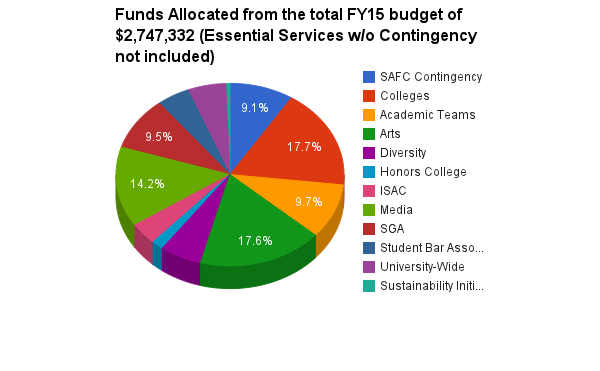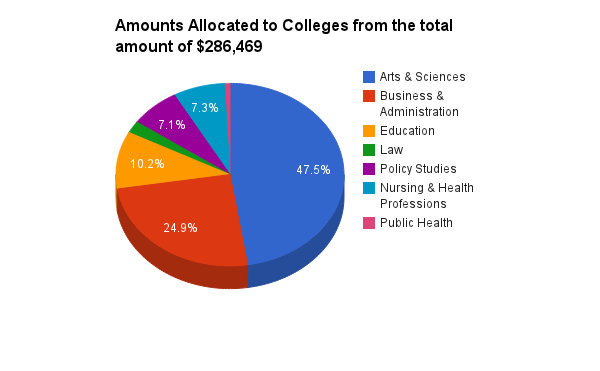
The Student Activity Fee Committee (SAFC) decided to increase the amount of money allocated to all colleges and organizations at the University at their final budget meeting on April 4.
According to the SAFC budget, which compares the allocation of student fees from the original 2014 Fiscal Year (FY14) to the final allocation for the 2015 Fiscal Year (FY15), the total amount of fee allocation in FY14 within Georgia State was $2,597,333. For FY15, the amount has increased to $2,747,333.
“All of our money that we received is based on a head-count. More money came into the budget than we had known of when we first allocated the funds,” said Dr. Rebecca Stout, associate vice president for Student Affairs and dean of students.
In FY14, the highest amount of SAFC’s reallocation was to the arts with an allocation of $272,742. For FY15, the allocated amount was $284,292. The next highest allocation amount was $263,200 for the various colleges.
In FY15, the amount for the colleges increased to $286,470, maintaining it as the highest in the final SAFC budget.
The lowest amount of allocation for both FY14 and FY15 was in Sustainability Initiatives. The amount of allocation was $10,000.
Money allocated to colleges

As stated in the budget, the total amount of SAFC allocations for colleges is divided between all seven of the colleges and schools at Georgia State.
The money that is allocated to each college is used by the college and their charter organizations that are affiliated with them.
The money goes towards “travel, events and activities of that college and they are usually based on their mission. These activities are also open to all students,” Stout said.
The amount of money allocated for all colleges within the university has increased from the original SAFC budget in FY14 to the final SAFC budget in FY15.
The college that received the greatest amount of allocated funds was the College of Arts and Sciences for both fiscal years. The original amount was $123,352. The final amount on the budget increased to $136,148.
According to Dr. Stout the College of Arts and Sciences received the most allocation because of the large number of students that were enrolled in the fall of 2013.
Nygel Jones, a sophomore and physics major, said he understands why the College of Arts and Sciences has the most money being allocated to it.
“…When you have the College of Arts and Sciences where you have majors like biology, chemistry, and physics where constant research is going on and constant research is going on in every field but those are the major fields that a lot of people want to invest in… and requires a lot of money,” Jones said.
The college that received the least amount of allocated funds and increase was the School of Public Health.
The school had $1,708 reallocated to it in the FY14 budget which increased by $516 leading to a final amount of $2,224 allocated for FY15.
The fee allocations in the budget are broken down into different groups which include colleges, academic teams, arts and diversity. Other sections are the Honors College, International Student Association Council (ISAC) and media.
The fee allocations are further broken down into the Student Government Association, the Student Bar Association, University-Wide and Sustainability Initiatives.
SAFC Contingency, money set aside that covers unforseen future expenses that are not included in the budget, and essential services without contingency are also included.
